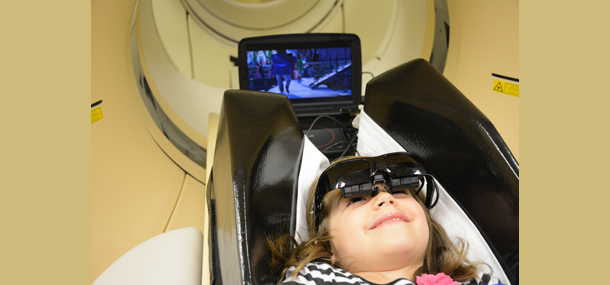
We’ve all seen that look our children get when they are zoned out in front of the TV, paying no attention to the people or things around them.
In the Nuclear Medicine department of Radiology, the staff is using children’s interest in TV shows and movies to help them accomplish PET/CT imaging without sedation medicine or general anesthesia when appropriate. Recently, Dr. Michael Gelfand, along with two nuclear medicine technologists and a child life specialist, looked at the use of video goggles for distraction during whole body PET/CT scans and any potential impact on the quality of imaging.
The research included 30 PET/CT scans in which children 4-13 years old were allowed to watch a video of their choice using special video goggles. The video goggles look like fancy sunglasses and are worn in the same way. DVD movies and shows are seen through a special screen lens in the movie goggles, helping children to stay focused on the movie or show and pay less attention to the big camera taking their pictures. The results found that the video goggles used for distraction during the PET/CT scan did not produce any significant reduction in the quality of the images.
Children coming in for a PET/CT scan have the option to use these video goggles. Now with this research, physicians can be assured that using this distraction option will not interfere with the image quality or results.
Contributed by Dr. Michael Gelfand; Chelsea Kist (CNMT), Jennifer Harris (CNMT) Amanda Rich (CCLS) and edited by Catherine Leopard (CCLS).